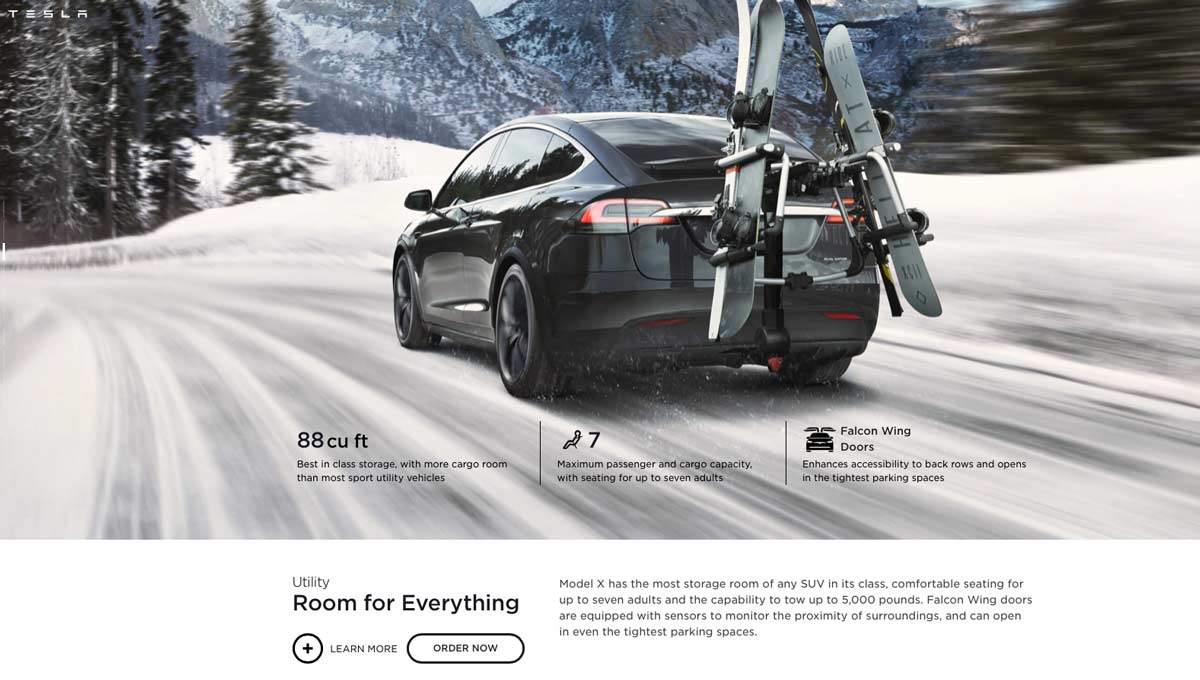What Are Product Pages?
Think of product pages as complementary to category pages. Whereas your category pages are high-level, target short-tail keywords and useful higher in the funnel, product pages are niche, target long-tail keywords and where the user takes action to become a customer. Ponder this snippet from a Yoast article, which sums the relationship up well:
“If you sell bathing suits and you optimize every product page, all those pages will compete for the term “bathing suit”. You should optimize them for their specific brand, make & model and link them all to the “bathing suit” category page. That way the category page can rank for “bathing suit”, while the product page can rank for the more specific terms. This way, the category page prevents the individual pages from competing.”
A product page is inherently more actionable, meaning the copy that you write needs to be actionable. A product page is normally where you will utilize your sales copy talents.
A key element to product pages is a fully integrated design. Everything from product carousels and videos, reviews and testimonials, a zoom function or even clothing size choices. If you have a visually sound product page design and website layout, the copy mainly needs to pinpoint the benefits, specs, description and price.
Learn more about drawing users into your website – read out post: SEO Copywriting Tips
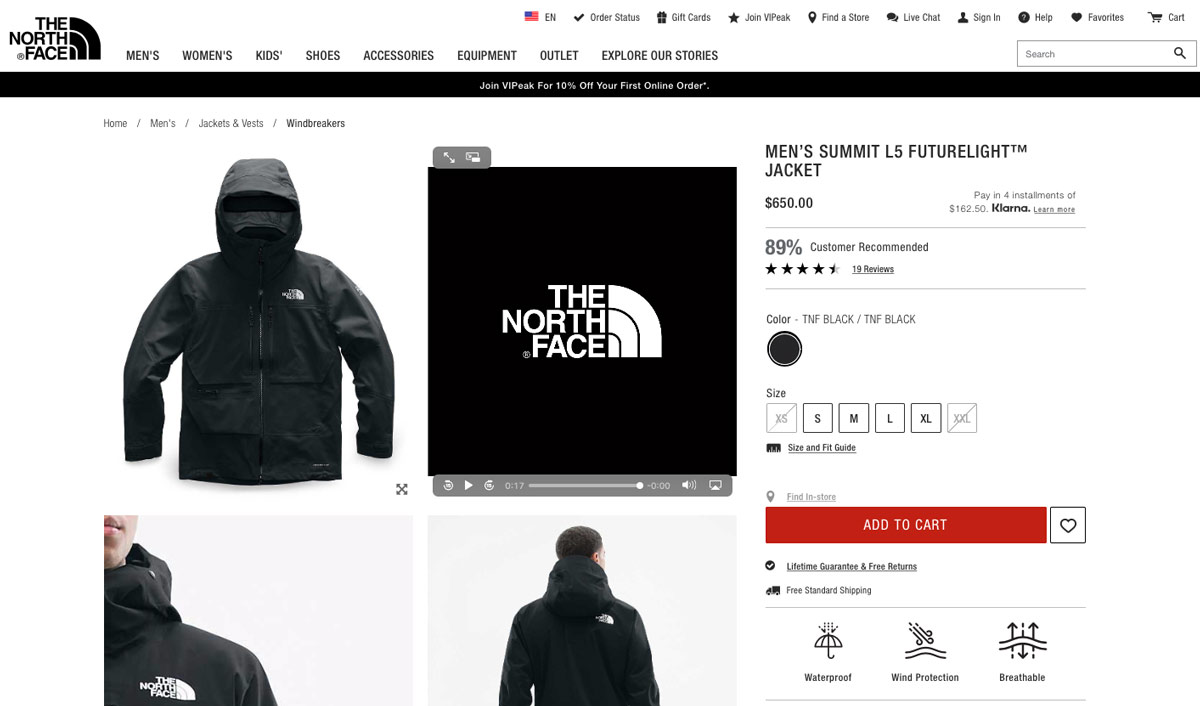
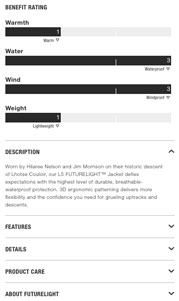 When the user hits a product page, they most likely know that they want the product (or one similar), all they need is the right persuasion. Take a look at a North Face website’s product page above.
When the user hits a product page, they most likely know that they want the product (or one similar), all they need is the right persuasion. Take a look at a North Face website’s product page above.
It offers every bit of information that the consumer needs to reaffirm their decision to make a purchase. Reviews give a third-party confirmation of product quality, while the simple grey box cleanly presents details, benefits, features and specs. Also, it’s fun clicking around on the different colors offered – there’s even a video that showcases the jacket.
Well written product descriptions will boost SEO and conversions — and if you don’t have the wealth of designers and writers at your disposal like North Face does, there’s a little formula that might help the average marketer a little help when writing product descriptions:
3-5 Sentences of Product Storyline + Bullet Point List of Specs or Features = Engaging Product Description[d]
When it comes down to it, product descriptions should set proper expectations for what the consumer gets out of the item. If you’re being honest with your descriptions you should see return rates and customer service questions decrease.
Writing Product Pages: Tips
Product pages are crucial components to whether or not you move products. Enact some of the following tips to improve your approach to improving your online store.
Ecommerce Messaging
It's imperative that you humanize your company online and present a solidified brand voice. If you’ve put ROI front and center of your ecommerce marketing strategy – well, my friend, you’ve already lost.
Here are some ways to improve your product page messaging:
- Improve your content brainstorms – if you're have trouble coming up with new ideas, consider rethinking the way in which you brainstorm copy ideas. Head over to our brainstorming guide to break free from creative block.
- Don't overload your product pages – remove excess language and keep sentences short. Break down attributes with bullet points.
- Communicate the true benefit – while your product may have some of the finest specs in the industry, drill down into the core message that you're selling. For example, a luxury car brand may sell the "essence of freedom and excitement," not just a super-fast automobile.
- Build relationships with an offer – provide a 15 percent coupon in exchange for their email or signing up for a membership program, for example. Language can reflect the great value, urgency or one-up on competitors.
- Mix it up with imagery – sometimes, an image, icon or graphic can say much more than a sentence. It's even more powerful when paired with short, snappy headlines and succinct body copy.
- Say thank you – follow up your sales with a thank you. Customers always appreciate it when you go the extra mile.
Enhanced security features
Enhanced security features on your online store are a good idea. Too often, consumers' personal information ends up in the hands of criminals due to cybersecurity oversights. Of course, many are familiar with the infamous Target hack of 2014, in which millions of target consumers’ personal information was breached.
As an ecommerce store, you can put your customer's minds at ease by adding some language and imagery related to the security level of your site — particularly on transactional pages.
Improve slow-loading pages
Not only do slow-loading web pages frustrate users, it affects your SEO copywriting strategy by negating your message. Online, there are most likely hundreds of other companies competing against you, don’t give the consumer a reason to bounce from your site and head to theirs. Also remember the average attention span of a web user is about eight seconds (and will only keep going down), giving you limited time to catch their business.
Develop a mobile strategy
Just as slow-loading pages affects user experience and SEO, so too does not having a mobile marketing strategy. While desktop still converts more users, traffic to ecommerce websites now accounts for nearly 50 percent of overall online U.S. retail traffic according to an IBM report. Additionally, eMarketer expects mobile to overtake desktop for US search ad dollars this year, rising from $8.72 billion to $12.85 billion—just slightly above desktop’s $12.82 billion.
At the same time, there will be 156.4 million mobile phone search users in the US, representing 49.0% of the population. This has huge implications for your ecommerce and PPC strategy – in other words, get yourself a mobile website.
Direct your audience
Using clear calls-to-action buttons, whether it’s a link to another page, a phone number or form, give your site visitor a specific next step. As you can see in the example from Gramavox below, their clean, minimal product page mirrors that of the clean, minimal product itself. Notice, the product isn't yet available, but that isn't stopping them from capturing emails with a commanding yellow "Submit" email button.
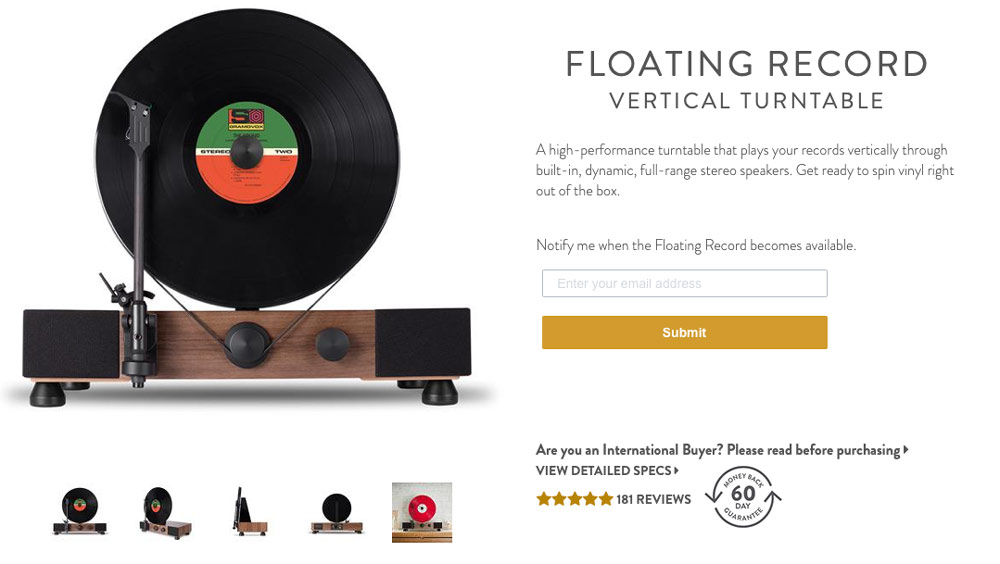
Writing Sales Copy
Not all copy on your webpage will be sales copy – in fact, most of it shouldn’t. But, like the example used above, you need to persuade the consumer at the point of purchase.
Since the consumer is already on your product page, they have done enough research to navigate towards a specific product.
They are through the “informational” phase, no longer searching with general informational keywords on Google, like “benefits of [insert product category here]” or “how to buy [insert product category here].” They are also moving beyond the “investigative” phase, and done searching keywords like “[specific product model] vs. [specific product model]” or "Reputation of [specific product brand]".
They are now moving into the final "actionable" part of your funnel and are considering purchasing your product. The funnel below illustrates this point:
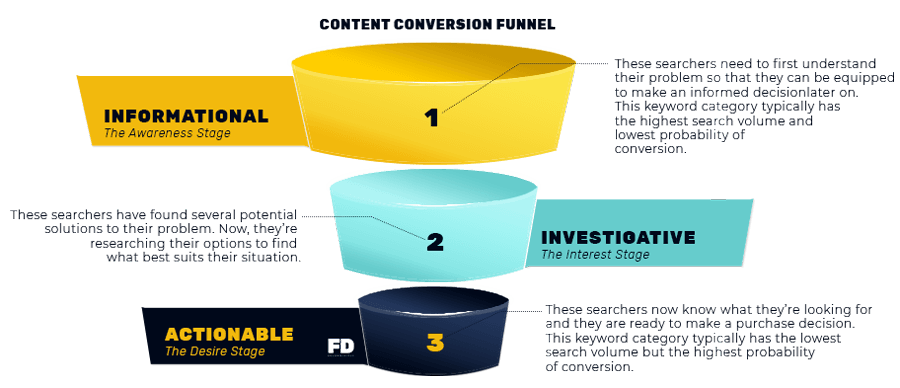
So how do you reach these types of people? These searchers use very brand- or product-specific queries – so, developing content around terms like "[Specific Product] Reviews" or "Is [Specific Product] [Safe/Environmentally-friendly/affordable/etc.]?" This will help drive traffic for people who are searching for specific information about a product, and you'll be there to capture them with your content.
Do you need help supercharging your product copy?
Do you need help with product page copy? We help online brands of all types succeed with solid ecommerce strategy. Learn more about our SEO copywriting services and find out how we can assist your business.
Get in touch with our team to discuss how we can improve the digital appeal of your small business.


